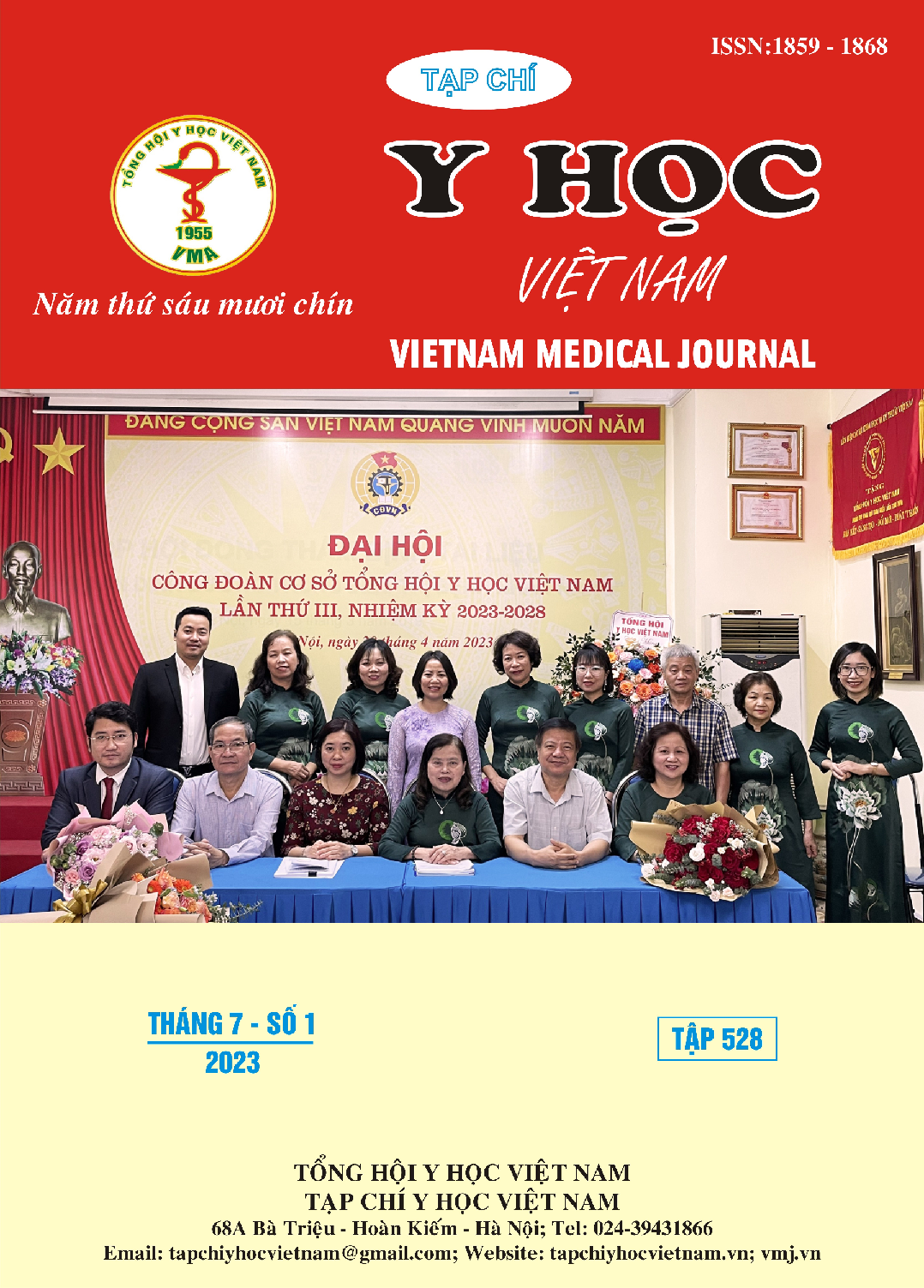STUDY THE CLINICAL AND PARACLINICAL CHARACTERISTICS AND ASSESS THE QUALITY OF LIFE OF PATIENTS WITH MANDIBULAR OSTEOBLASTOMA SURGERY
Main Article Content
Abstract
Background: Osteoblastoma is a type of tumor originating from the tooth-forming organ, benign and accounts for 10% of all tumors in the maxillofacial region. The growth and invasion of the tumor is often silent, continuous, causing severe facial deformity if the tumor size is large. Radical surgery is widely accepted and considered a safe treatment. However, the consequences of these surgical methods have profound and lasting effects on the quality of life of patients. patient. Objective: To study the clinical and paraclinical characteristics and assess the quality of life of patients with mandibular osteoblastoma surgery. Subjects, time and place of the study: The study sample includes patients with confirmed diagnosis of mandibular osteoblastoma based on clinical, radiographic and pathological examination at Ho Chi Minh City Odonto-Stomatology Hospital. -Research location: Department of Oral and Maxillofacial Surgery, Ho Chi Minh City Hospital of Odonto-Stomatology. -Research period: from March 2021 to September 2022. The study was designed by cross-sectional descriptive method. Sample size 30 subjects. icon. Choose a convenient template. Results: The most common symptom was local simple hump (56.7%) and the density of the tumor was often hard (63.3%). The size of osteoblastoma measured on radiographs is from 3-10 cm, accounting for 70%. Mandibular osteoblastoma usually occurs involving the transverse branches (50%) and has a multifocal form (63.3%). 7 days after surgery for osteoblastoma, the factors that greatly affect the patient's quality of life are chewing, swallowing, and pronunciation with statistically significant differences compared to before surgery (p<0.05). The overall quality of life of patients 3 months after surgery improved compared to before surgery and 7 days after surgery and the difference was statistically significant (p<0.05). Conclusion: The overall quality of life of patients 3 months after surgery improved compared to before surgery and 7 days after surgery.
Article Details
Keywords
osteoblastoma, surgery, quality of life
References
2. Huỳnh Văn Dương, Nguyễn Tài Sơn (2015), "U nguyên bào men xương hàm dưới: Đánh giá kết quả phẫu thuật triệt để". Tạp chí Y Học Thực Hành, 5(964), tr. 102-106.
3. OA Effiom, OM Ogundana (2018), “Ameloblastoma: current etiopathological concepts and management”, Oral Diseases, 24(1), pp. 307-316.
4. Okoturo E, Ogunbanjo O, Akinlaye A, Bardi M (2011), “Quality of life of patients with segmental mandibular resection and immediate reconstruction with plates”, J Oral Maxillofac Surg, 69(5), pp. 2253-2259.
5. Andrii Hresko, Olga Burtyn (2021), “Controversies in ameloblastoma management: evaluation of decision making, based on a retrospective analysis”, Med Oral Patol Oral Cir Bucal, 26(2), pp. 181-186.
6. Hammed Sikiru Lawal, Rafel Adetokunbo Adebola (2016), “Quality of life of patients surgically treated for ameloblastoma”, Nigerian Medical Journal, 57(2), pp. 91-98.
7. Lowe D. W., Rogers, S.N. (2012), “Guidance for Scoring and Presentation: University of Washington Quality of Life Questionnaire (UWQOL v4)” , Head and Neck Cancer Support , [cited 2021 July 15], Available from: URL: http://www.hancsupport.com/sites/default/files/assets/pages/UW-QOL-update_2012.pdf.
8. Juanfang Zhu, Yanjie Yang (2013), “Assessment of quality of life and sociocultural aspects in patients with ameloblastoma after immediate mandibular reconstruction with a fibular free flap”, Journal of Oral and Maxillofacial Surgery, 52(1), pp. 163-167.


